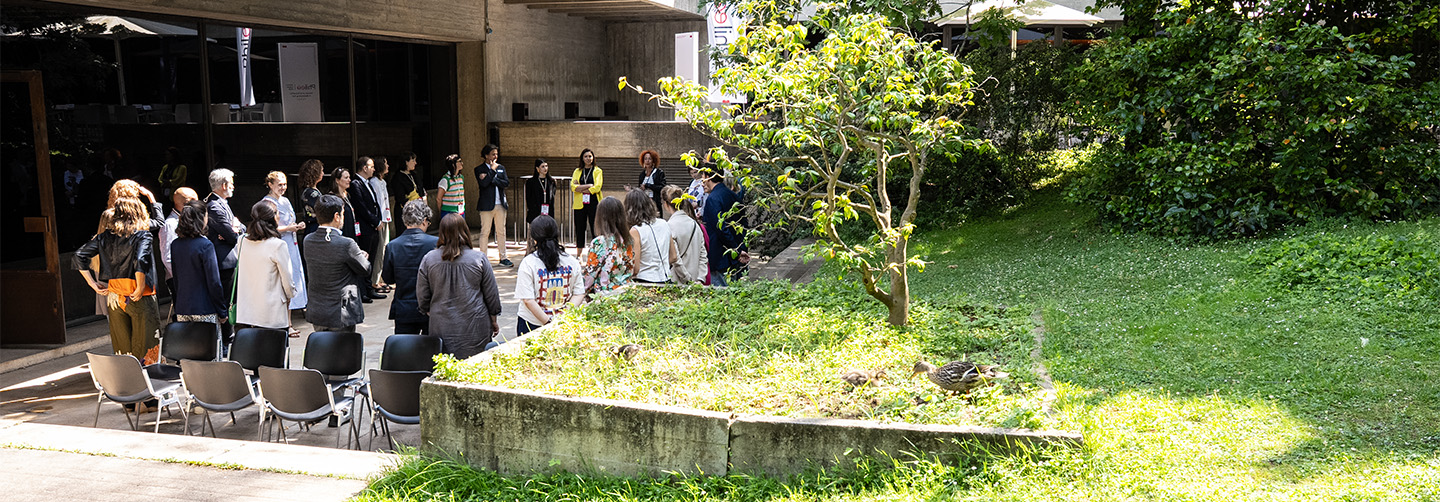About Philanthropy Infrastructure
What philanthropy infrastructure is and how it works.
As European philanthropy becomes more diverse and, at the same time, more interdependent, so too does its infrastructure. When we talk about “philanthropy infrastructure”, we refer to the ecosystem of organisations that support and empower foundations and other types of philanthropies in their work. Philanthropy infrastructure takes many forms ‒ from national associations and thematic networks to giving platforms, funder collaboratives and regranting bodies.
Philanthropy infrastructure organisations (PIOs) are the backbone of the sector, enabling foundations and donors to maximise their impact in society. They do this by both supporting philanthropic organisations and proactively sensing the needs of the sector. They orchestrate networks, foster learning communities, generate and provide knowledge & expertise, incubate ideas, develop their own programmes, advocate for appropriate legal frameworks and ultimately unlock the potential of philanthropy in all its diverse identities and approaches. By convening the multitude of actors and reinvesting legitimacy, relationships and knowledge back into the ecosystem, PIOs empower their direct constituencies and serve the broader sector as catalysts for long-term transformation.
With 28 PIOs within its membership, Philea understands and values the critical importance of these organisations to the European philanthropic ecosystem.
Acting as the connective tissue of the ecosystem, PIOs enable long-term, systemic impact that individual actors cannot achieve alone. They strengthen the effectiveness, legitimacy and resilience of the philanthropic sector. As lighthouses in the open sea, they foster coordination and a sense of collective direction, including through:
- Encouraging shared standards and transparency, and supporting a healthy operating environment for philanthropy to thrive.
- Providing legal and regulatory guidance; facilitating knowledge exchange and best practices; representing the sector in policy dialogue; and supporting professional development.
- Contributing to a comprehensive, pan-European understanding of the number of public-benefit foundations, their assets and the scale of their giving ‒ through local data collection.
PIOs serve as connectors across the philanthropic ecosystem, engaging funders, civil society, policymakers and communities. Their networks span geographies, issues and organisational types, creating platforms for shared learning, collective action and alignment. This broad reach allows bridges to be built across sectors and stakeholders, and enables dialogue and appreciation of the diversity of contexts and needs across society.
PIOs contribute to development of local philanthropic infrastructure; enhancement of legal and tax frameworks; and stronger promotion of philanthropy and cultures of giving. They shape the values, norms and future directions of philanthropy. They act as knowledge hubs, producing insights and incubating innovation.
By holding space for reflection and critique, they act as an immune system and help the sector remain responsive to societal changes, ethical challenges and systemic injustices. This ultimately ensures that philanthropic resources are deployed more effectively, transparently and accountably for the common good.
Beyond financial capital, PIOs offer critical intangible resources: trusted relationships, contextual knowledge, convening power and operational support. These shared resources reinforce the ecosystem’s capacity to learn, adapt and collaborate: A lonely bee, working in isolation, can only do so much; but when it joins the beehive – a thriving ecosystem of peers – its efforts multiply. Especially in times of crisis or transformation, PIOs mobilise these assets to sustain momentum, maintain institutional memory and empower actors across the sector.
For the catalytic roles of philanthropy infrastructure, you can learn more by exploring “The quiet might of philanthropy infrastructure” and a piece on the transformative power of PIOs for unlocking systems change.

Philea as infrastructure for European philanthropy
Philea provides infrastructure for European philanthropy to come together, by enabling, encouraging and empowering the philanthropic community to build a better today and tomorrow. We bring together over 250 foundation and philanthropic organisation members and 28 national infrastructure members from the EU and other European countries who collectively unite almost 9,000 members.
Together with our community, we co-create knowledge and learn from effective practices, collaborate around current and emerging issues, and promote enabling environments for doing good.
Philea’s philanthropy infrastructure members
Philea brings together the diverse landscape of national philanthropy infrastructure across Europe. These organisations vary widely in structure and scope — some operate without a membership base, while others convene anywhere from a handful to several thousand members. While some focus exclusively on foundations, others include corporate funders and a broader mix of philanthropic actors. Their operational models also differ: Most have very small teams of versatile professionals, while some have teams of up to 40 people.
We have PIOs from countries with a long tradition of institutional philanthropy rooted in religious institutions, wealthy families and industrial foundations; as well as from countries where philanthropy re-emerged after the fall of communism in 1989, largely supported by international donors in the 1990s. In these latter contexts, philanthropy might be often shaped by charity and direct a, though there is a growing shift toward social investment and community philanthropy. However, legal and tax systems in these countries are often inconsistent or underdeveloped, posing additional challenges amid strong political influences.
This diversity reflects the richness and adaptability of Europe’s philanthropic ecosystem. Individual actors have different mandates and toolkits, but they all work towards unlocking the potential of philanthropy for the common good. They act as bridges, lighthouses, immune systems, and compasses for the philanthropic ecosystem.
Connecting with global infrastructure
The philanthropy infrastructure ecosystem extends across the globe, with PIOs in every world region. Philea connects with many of these PIOs for learning, exchange and joint initiatives, and works closely with the WINGS global network, the only global network of philanthropy support and development organisations.
Learn more about philanthropy

